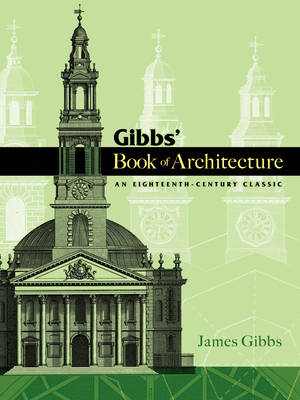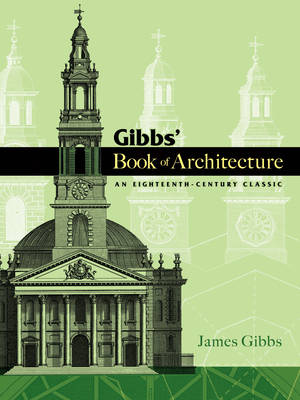
Je cadeautjes zeker op tijd in huis hebben voor de feestdagen? Kom langs in onze winkels en vind het perfecte geschenk!
- Afhalen na 1 uur in een winkel met voorraad
- Gratis thuislevering in België vanaf € 30
- Ruim aanbod met 7 miljoen producten
Je cadeautjes zeker op tijd in huis hebben voor de feestdagen? Kom langs in onze winkels en vind het perfecte geschenk!
- Afhalen na 1 uur in een winkel met voorraad
- Gratis thuislevering in België vanaf € 30
- Ruim aanbod met 7 miljoen producten
Zoeken
Omschrijving
One of England's most respected and influential architects, James Gibbs was born in Scotland, studied in Rome, and left a legacy of design the world will treasure forever. His legendary 1728 folio, a sprawling gallery of Gibbs's magnificent drawings, perspectives, and blueprints, is a brilliant testimony to his remarkable talent.
Profusely illustrated, the volume features such notable commissions as London's St. Martin in the Fields -- the inspiration for many steeple churches of the colonial period in America; St. Mary le Strand, his first public building; Marybone Chapel; The Church of Allhallows in Derby; plus Gibbs's first commission, an addition for King's College at Cambridge. His most outstanding accomplishment may be the circular Radcliffe Library at Oxford, for which he received a Master of Arts. Also included here are detailed floor plans, plus fine drawings of decorative marble cisterns, ornamental iron gates, stately funeral monuments, and much more. Essential for an understanding of classic architecture, this stunning edition should grace the bookshelf of every architect, as well as architectural students, teachers, and historians.
Profusely illustrated, the volume features such notable commissions as London's St. Martin in the Fields -- the inspiration for many steeple churches of the colonial period in America; St. Mary le Strand, his first public building; Marybone Chapel; The Church of Allhallows in Derby; plus Gibbs's first commission, an addition for King's College at Cambridge. His most outstanding accomplishment may be the circular Radcliffe Library at Oxford, for which he received a Master of Arts. Also included here are detailed floor plans, plus fine drawings of decorative marble cisterns, ornamental iron gates, stately funeral monuments, and much more. Essential for an understanding of classic architecture, this stunning edition should grace the bookshelf of every architect, as well as architectural students, teachers, and historians.
Specificaties
Betrokkenen
- Auteur(s):
- Uitgeverij:
Inhoud
- Aantal bladzijden:
- 192
- Taal:
- Engels
- Reeks:
Eigenschappen
- Productcode (EAN):
- 9780486466019
- Verschijningsdatum:
- 11/06/2008
- Uitvoering:
- Paperback
- Formaat:
- Trade paperback (VS)
- Afmetingen:
- 226 mm x 303 mm
- Gewicht:
- 644 g

Alleen bij Standaard Boekhandel
+ 47 punten op je klantenkaart van Standaard Boekhandel
Beoordelingen
We publiceren alleen reviews die voldoen aan de voorwaarden voor reviews. Bekijk onze voorwaarden voor reviews.









